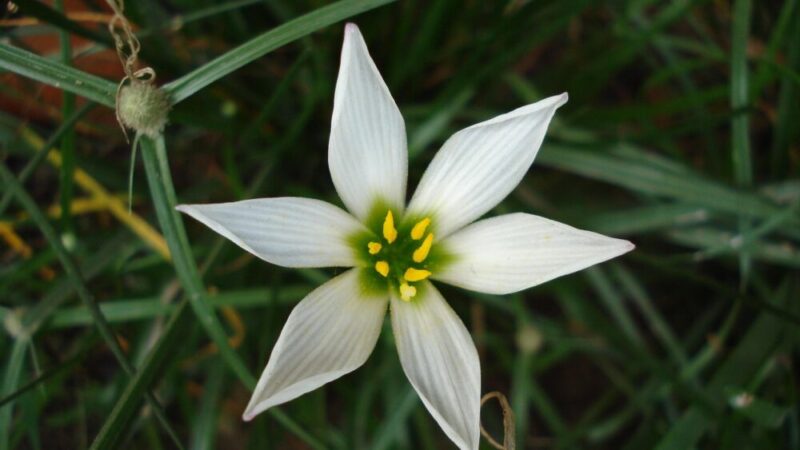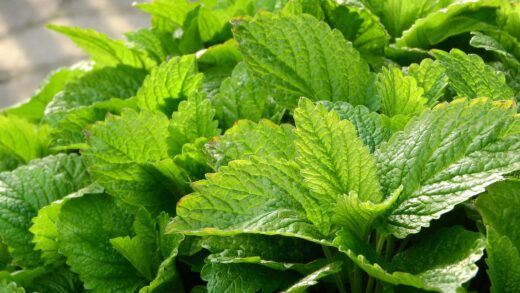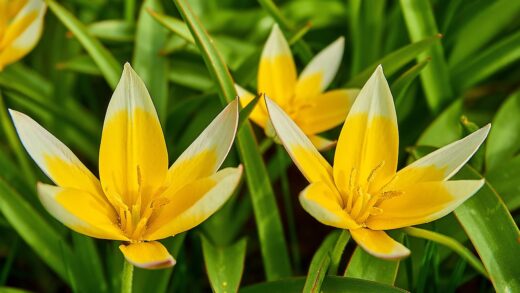Diseases and pests of the garden star-of-bethlehem

While the garden star-of-bethlehem is generally regarded as a hardy and resilient plant, it is not entirely immune to problems. Like any garden plant, it can be susceptible to a range of diseases and pests, particularly when growing conditions are less than ideal. Proactive care and creating a healthy growing environment are the most effective strategies for prevention. The most significant threat to this bulbous perennial is bulb rot, a condition directly linked to excessive moisture and poorly draining soil. Understanding and mitigating this primary risk is fundamental to keeping your plants healthy. Beyond this, a few fungal diseases and common garden pests may occasionally make an appearance, but these are typically less severe and can be managed with timely intervention.
A healthy plant is naturally more resistant to both diseases and pests. This resilience begins with proper site selection and soil preparation. Planting in a location with full sun and excellent drainage provides a strong foundation. Amending the soil with organic matter not only improves its structure but also fosters a healthy soil ecosystem, which can help suppress pathogenic organisms. Proper spacing between plants to ensure good air circulation is another simple yet effective measure to reduce the incidence of fungal diseases that thrive in damp, stagnant conditions.
Regular monitoring of your plants allows for the early detection of any potential issues. By inspecting the foliage and flowers periodically, you can catch problems before they become severe infestations or infections. Early intervention is often simpler and more effective than trying to control a well-established problem. Knowing what to look for—such as discolored spots on leaves, distorted growth, or the presence of insects—is the first step in effective pest and disease management.
When problems do arise, it is often best to start with the least toxic control methods. Cultural controls, such as adjusting watering practices or improving sanitation by removing diseased plant material, should always be the first line of defense. If further intervention is needed, organic or low-impact solutions like insecticidal soaps or horticultural oils are preferable to broad-spectrum chemical pesticides, which can harm beneficial insects and disrupt the garden’s ecological balance.
Fungal diseases and prevention
Fungal diseases are among the most common issues that can affect the garden star-of-bethlehem, particularly in humid or wet conditions. One of the primary concerns is bulb rot, caused by various soil-borne fungi such as Fusarium or Pythium. This disease thrives in waterlogged soil and attacks the bulb, causing it to become soft, mushy, and decayed. The above-ground symptoms include yellowing, wilting, and stunted growth. Prevention is paramount, as once a bulb has rotted, it cannot be saved. The key preventative measure is ensuring the soil has excellent drainage.
More articles on this topic
Another fungal issue that may appear on the foliage is rust. Rust diseases are caused by fungi that produce distinctive orange to reddish-brown pustules on the leaves. While typically not fatal to the plant, a severe infection can reduce its vigor by interfering with photosynthesis. Rust fungi are favored by mild temperatures and high humidity. To prevent rust, avoid overhead watering, which wets the leaves, and ensure there is good air circulation around the plants by not overcrowding them. If rust appears, remove and destroy the infected leaves to prevent the spores from spreading.
Gray mold, caused by the fungus Botrytis cinerea, can also be a problem, especially during cool, damp spring weather. This disease can affect flowers, stems, and leaves, causing them to develop grayish-brown, fuzzy mold and eventually rot. It often attacks fading flowers first. Good garden sanitation is crucial for controlling gray mold. Promptly remove any dead or decaying plant material, including spent flowers, as this is where the fungus often takes hold. Improving air circulation is also a key preventative strategy.
To proactively manage fungal diseases, you can consider applying a fungicide as a preventative measure, particularly if your garden has a history of such problems. However, a focus on cultural controls is generally more effective and sustainable. This includes planting certified disease-free bulbs, rotating planting locations if possible, and, most importantly, creating a growing environment with well-drained soil and good air movement that is less hospitable to fungal pathogens.
Common garden pests
The garden star-of-bethlehem is not a primary target for most garden pests, but it can occasionally be bothered by a few common culprits. Aphids are small, pear-shaped insects that use their piercing mouthparts to suck sap from tender new growth, such as leaves and flower stems. A large infestation can cause distorted growth and may lead to a sticky residue known as honeydew, which can in turn attract sooty mold. Aphids are often one of the first pests to appear in the spring.
More articles on this topic
Managing aphids is usually straightforward. For a minor infestation, a strong spray of water from a garden hose is often enough to dislodge them from the plants. They also have many natural predators, including ladybugs, lacewings, and hoverflies. Encouraging these beneficial insects in your garden can provide excellent long-term control. If the infestation is more severe, an application of insecticidal soap or neem oil can be an effective, low-toxicity solution.
Slugs and snails can also be a nuisance, especially in damp, shady gardens. These mollusks feed on the tender leaves of the garden star-of-bethlehem, leaving behind irregular holes and a tell-tale trail of slime. They are most active at night or on overcast days. There are several methods for controlling slugs and snails, ranging from hand-picking them off the plants after dark to setting up beer traps (shallow containers filled with beer that they are attracted to and fall into).
Another pest to be aware of is the narcissus bulb fly. Although its primary host is the narcissus (daffodil), it can sometimes lay its eggs near other bulbous plants. The resulting larva, a single large maggot, burrows into the bulb and feeds on it from the inside, eventually hollowing it out and killing the plant. The best way to prevent this is to ensure that after the foliage dies back, the neck of the bulb is covered with soil, which makes it harder for the fly to lay its eggs. If you suspect an infestation, you may need to dig up and destroy the affected bulbs to prevent the pest from spreading.
Recognizing symptoms of distress
Being able to recognize the signs of a problem early is key to successful intervention. Healthy garden star-of-bethlehem plants should have vibrant green, strap-like leaves and strong, upright flower stems. Any deviation from this can be an indicator of an underlying issue. One of the first signs of trouble is often a change in leaf color. Yellowing leaves (chlorosis) can signal several problems, including overwatering, nutrient deficiency, or the onset of bulb rot.
If the yellowing occurs prematurely in the spring while the plant is still actively growing, overwatering is a likely culprit. Check the soil moisture and ensure it is not saturated. If the yellowing is accompanied by wilting or a general lack of vigor, carefully dig up one of the bulbs to inspect it for signs of rot. A healthy bulb should be firm and white, while a rotting bulb will be soft, brown, and may have a foul odor.
Stunted or distorted growth can be another symptom of distress. This could be caused by a pest infestation, such as aphids feeding on the new growth, or it could be the result of a viral disease. While viral diseases are rare in garden star-of-bethlehem, they can occur. Unfortunately, there is no cure for plant viruses, and any infected plants should be removed and destroyed to prevent the disease from spreading to other plants, often via sap-sucking insects.
The presence of spots, lesions, or powdery or fuzzy growths on the leaves or flowers is a clear indication of a fungal or bacterial disease. Note the color, size, and location of these symptoms. For example, powdery white coating suggests powdery mildew, while orange pustules are characteristic of rust. Accurate identification can help you choose the most appropriate management strategy and prevent the problem from worsening.
Integrated pest management (IPM)
Integrated Pest Management, or IPM, is a holistic and environmentally sensitive approach to managing pests and diseases. Rather than simply reacting to a problem with chemical sprays, IPM focuses on long-term prevention and uses a combination of different control methods. The foundation of an effective IPM program for your garden star-of-bethlehem is to create a healthy and resilient garden ecosystem. This starts with cultural controls, such as choosing the right plant for the right place and maintaining good soil health.
The next level of control in an IPM strategy is mechanical or physical. This includes actions like hand-picking pests such as slugs, using water sprays to dislodge aphids, or setting up physical barriers. It also involves good garden sanitation, such as removing and destroying diseased plant material to reduce the amount of pathogen inoculum in the garden. These simple, non-toxic methods are often highly effective when implemented early.
Biological control is another key component of IPM. This involves encouraging and conserving the natural enemies of pests. By avoiding broad-spectrum pesticides and planting a diversity of flowering plants, you can attract beneficial insects like ladybugs, lacewings, and predatory wasps that will help keep pest populations in check naturally. A garden that is teeming with life is often a healthy garden with fewer pest outbreaks.
The use of chemical controls, including organic and synthetic pesticides, is considered a last resort in an IPM program. If chemical intervention is deemed necessary, the least toxic and most specific option should be chosen to minimize harm to non-target organisms and the environment. For example, using a targeted product like insecticidal soap for aphids is preferable to a broad-spectrum insecticide. By following an IPM approach, you can manage pests and diseases effectively while promoting a healthier garden environment.
The role of environmental stress
Environmental stress plays a significant role in a plant’s susceptibility to diseases and pests. A plant that is stressed by unfavorable growing conditions will have a weakened defense system, making it an easy target. For the garden star-of-bethlehem, the most common stressors are related to water, light, and soil conditions. As previously mentioned, soil that is too wet is the number one stressor and the leading cause of failure for this plant.
Drought stress can also be a problem, although the plant is quite drought-tolerant during its summer dormancy. However, if it does not receive adequate moisture during its critical spring growth period, its growth can be stunted, and its flowering can be poor. A drought-stressed plant is also more attractive to certain pests, such as spider mites, which thrive in hot, dry conditions. Providing consistent moisture during the spring is therefore crucial for preventing this type of stress.
Improper light exposure can also be a source of stress. While the garden star-of-bethlehem can tolerate partial shade, it performs best in full sun. In a location that is too shady, the plant may become weak and spindly as it stretches for light. This etiolated growth is more susceptible to lodging (falling over) and may be more vulnerable to fungal diseases due to reduced air circulation and slower drying of foliage.
Extreme temperatures, both hot and cold, can also cause stress. A sudden late frost in the spring can damage the emerging foliage and flower buds. While the bulbs themselves are quite cold-hardy, the new growth is more tender. Conversely, extremely high temperatures, especially when combined with intense sun, can scorch the leaves. Mitigating these environmental stressors by choosing an appropriate planting site and providing proper care is the most effective way to ensure your plants remain healthy and robust.



















